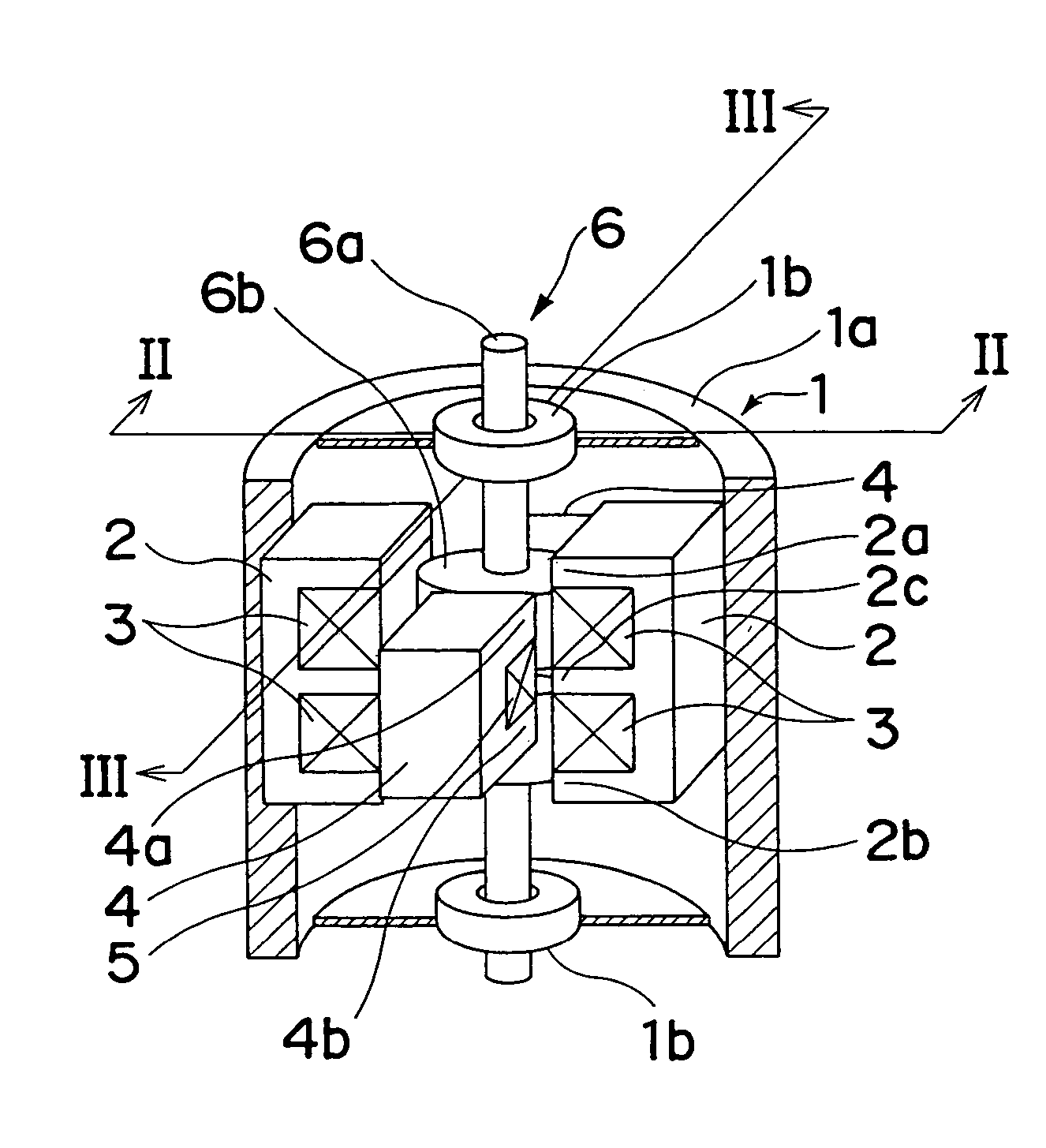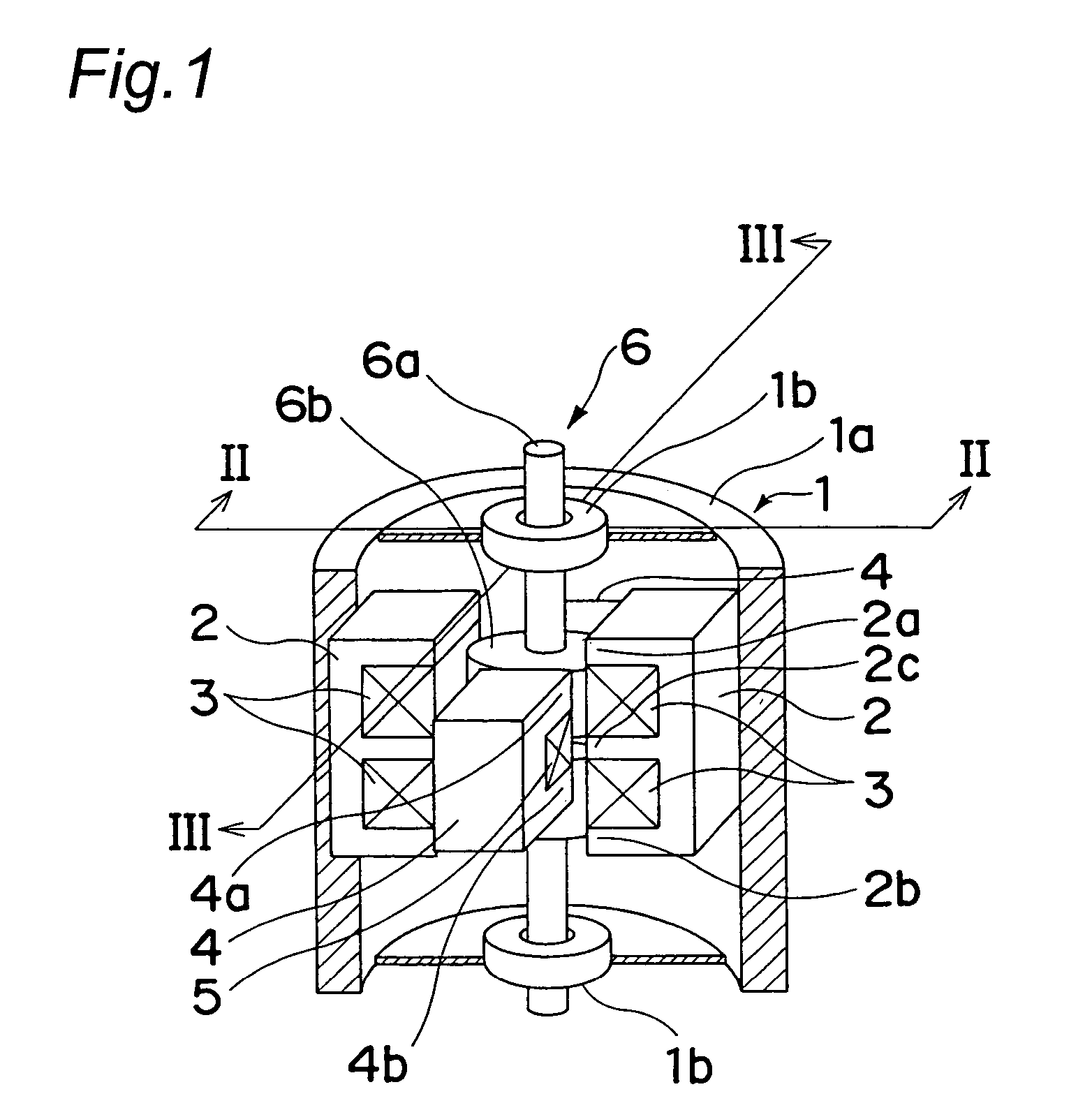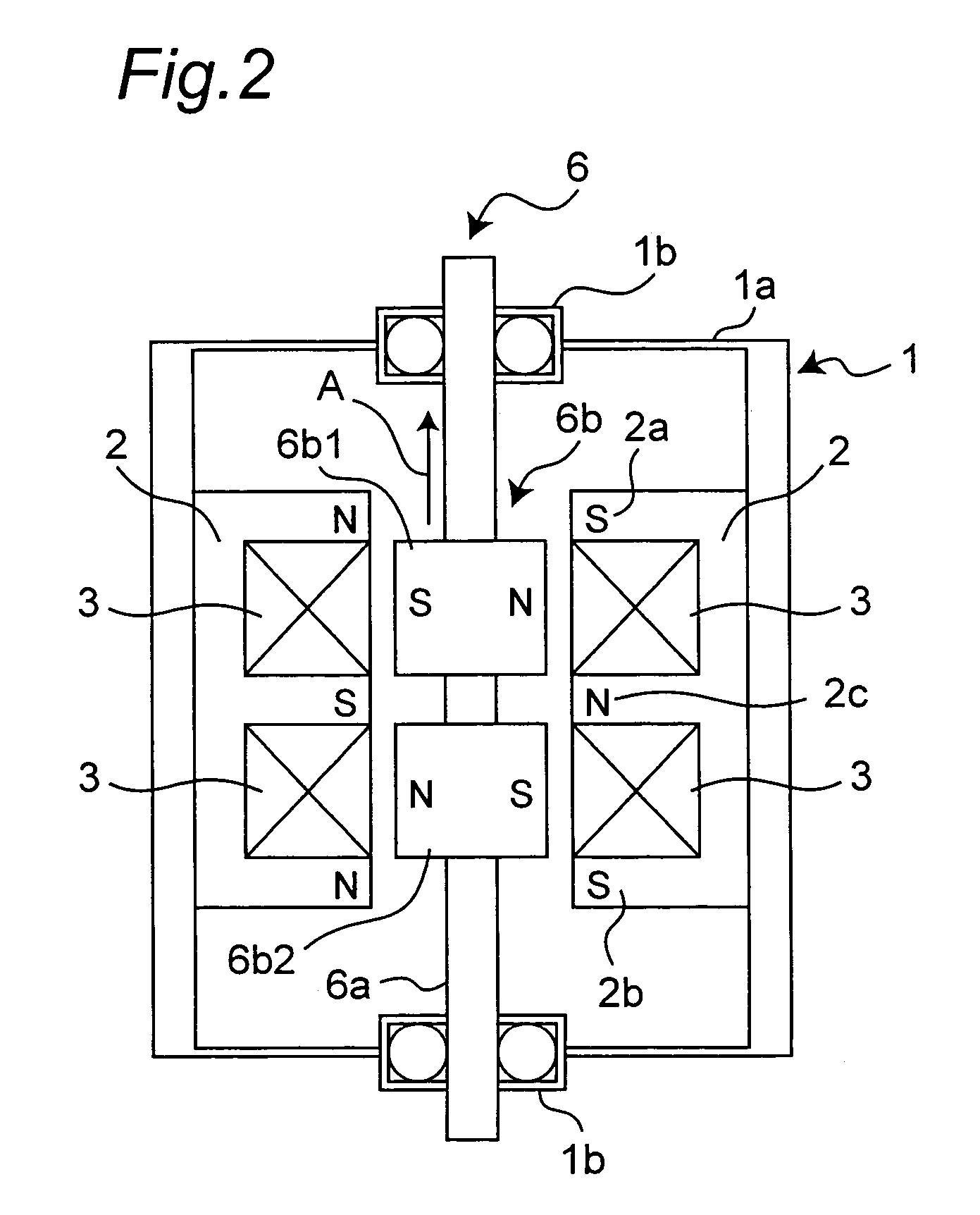Actuator
a technology of actuators and actuators, applied in the direction of motor/generator/converter stoppers, dynamo-electric converter control, machines/engines, etc., can solve problems such as noise, and achieve the effect of improving the degree of freedom of operation control
- Summary
- Abstract
- Description
- Claims
- Application Information
AI Technical Summary
Benefits of technology
Problems solved by technology
Method used
Image
Examples
first embodiment
(First Embodiment)
[0040]FIGS. 1 to 10 show an actuator according to a first embodiment of the present invention. As shown in FIG. 1, this actuator mainly includes a casing 1, a pair of first stationary members 2 each having a first coil 3 wound therearound, a pair of second stationary members 4 each having a second coil 5 wound therearound and a movable member 6. The movable member 6 includes a shaft 6a and a driving force generator 6b secured to the shaft 6a.
[0041]The casing 1 includes a housing portion 1a and a pair of bearing portions 1b and accommodates the first and second stationary members 2 and 4 and the movable member 6. The housing portion 1a is formed by metallic magnetic material into a cylindrical shape having a closed bottom. On the other hand, each of the bearing portions 1b is formed by a so-called ball bearing in which metal balls each having a smoothly worked surface are fitted into a cavity of a cylindrical tube having a concentric section. The two bearing portio...
second embodiment
(Second Embodiment)
[0059]Then, FIGS. 11 and 12 show an actuator according to a second embodiment of the present invention. This actuator is different from the actuator of the first embodiment in shapes and relative position of the first stationary member 2 and the second stationary member 4 and other constructions of this actuator are the same as those of the actuator of the first embodiment.
[0060]In this actuator, each of magnetic pole faces of magnetic pole portions of the first stationary member 2 and the second stationary member 4 is formed into a circular curved surface so as to confront the cylindrical magnetic pole face of the driving force generator 6b of the movable member 6 via a predetermined gap. In addition, the magnetic pole portions of the second stationary member 4 are provided in recesses among the E-shaped magnetic pole portions of the first stationary member 2. Thus, when viewed in the axial direction as shown in FIG. 12, each of opposite end portions of the magne...
third embodiment
(Third Embodiment)
[0063]Then, FIG. 13 shows an actuator according to a third embodiment of the present invention. This actuator is different from the actuator of the first embodiment in shape of the movable member 6 and relative position of the movable member 6 and the first stationary member 2 and other constructions of this actuator are the same as those of the actuator of the first embodiment.
[0064]Each of the magnets 6b1 and 6b2 forming the driving force generator 6b of the movable member 6 is a cylindrical magnet having a thickness smaller than an axial width of the recesses among the E-shaped magnetic pole portions 2a to 2c of the first stationary member 2 and a diameter of the cylindrical magnet is formed larger than a distance between the corresponding magnetic pole portions of a pair of the first stationary members 2 such that the cylindrical magnet projects into each of the recesses among the magnetic pole portions 2a to 2c of the first stationary member 2. Hence, motion o...
PUM
 Login to View More
Login to View More Abstract
Description
Claims
Application Information
 Login to View More
Login to View More - R&D
- Intellectual Property
- Life Sciences
- Materials
- Tech Scout
- Unparalleled Data Quality
- Higher Quality Content
- 60% Fewer Hallucinations
Browse by: Latest US Patents, China's latest patents, Technical Efficacy Thesaurus, Application Domain, Technology Topic, Popular Technical Reports.
© 2025 PatSnap. All rights reserved.Legal|Privacy policy|Modern Slavery Act Transparency Statement|Sitemap|About US| Contact US: help@patsnap.com



